Today Current Affairs: 18th August 2021 for UPSC IAS exams, State PSC exams, SSC CGL, State SSC, RRB, Railways, Banking Exam & IBPS, etc
Table of Contents
National Gene Bank
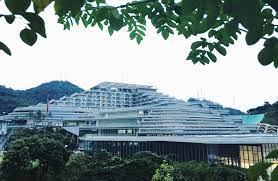
The Union Minister for Agriculture and Farmers Welfare inaugurated the world’s second-largest refurbished state-of-the-art National Gene Bank at the National Bureau of Plant Genetic Resources (NBPGR).
- Gene Banks are a type of biorepository which preserve genetic material. A collection of seed plants, tissue cultures etc.
- A gene is the basic physical and functional unit of heredity. Genes are made up of Deoxyribonucleic Acid (DNA).
- The National Gene Bank was established in the year 1996 to preserve the seeds of Plant Genetic Resources (PGR) for future generations, and has the capacity to preserve about one million germplasm in the form of seeds.
- Germplasm is living tissue from which new plants can be grown.
- NBPGR is meeting the need of in-situ and ex-situ germplasm conservation through Delhi Headquarters and 10 regional stations in the country.
- In situ and ex situ conservation focuses on the maintenance of species diversity within or away from their natural habitats, respectively.
- Presently, it is protecting 4.52 lakh accessions, of which 2.7 lakh are Indian germplasm and the rest have been imported from other countries.
- An accession is a single, collected variety or varieties of a wild plant, a landrace or a plant variety that has been produced by selective breeding, more commonly known as a cultivar.
- The NGB has four kinds of facilities, namely, Seed Genebank (- 18°C), Cryogenebank (-170°C to -196°C), In vitro Genebank (25°C) and Field Genebank, to cater to long-term as well as medium-term conservation.
- It stores different crop groups such as cereals, millets, medicinal and aromatic plants and narcotics, etc.
75 “Hunar Haat”:
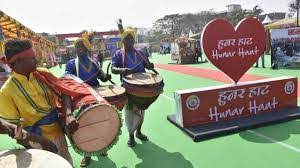
The Union Ministry of Minority Affairs has set a target to provide employment opportunities to 7 lakh 50 thousand artisans, craftsmen through 75 “Hunar Haat”.
- To be organised across the country, the 75 Haats will be a part of the ‘Amrit Mahotsav’ and will mark 75 years of India’s Independence.
- Also, 75 “Amrit Mahotsav Parks” will be constructed on the vacant Waqf lands across the country under “Waqf Taraqqiati Scheme” and “Pradhanmantri Jan Vikas Karykram” (PMJVK).
- Hunar Haat is an exhibition of handicrafts and traditional products made by artisans from the minority communities.
- Theme: Vocal for Local.
- Organizer: These are organised by the Ministry of Minority Affairs under USTTAD (Upgrading the Skills & Training in Traditional Arts/Crafts for Development) scheme.
- The USTTAD scheme aims to promote and preserve the rich heritage of the traditional arts & crafts of the minority communities.
- Aim: These Haat aims to provide market exposure and employment opportunities to artisans, craftsmen and traditional culinary experts.
- It envisages boosting the skills of craftsmen, weavers and artisans who are already engaged in the traditional ancestral work.
Significance:
- ‘Hunar Haat’ has proved to be an “Empowerment Exchange” for master artisans and craftsmen.
- It has proved to be immensely beneficial and encouraging for artisans and craftsmen as lakhs of people visit the “Hunar Haat” and purchase indigenous handmade products of artisans on a large scale.
- More than 5 lakh artisans, craftsmen and people associated with them have been provided employment and employment opportunities in the last about 5 years through “Hunar Haat”.
TAPAS (Training For Augmenting Productivity And Services):
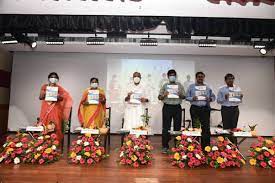
The Ministry for Social Justice and Empowerment has launched an online portal TAPAS (Training for Augmenting Productivity and Services).
- The idea of TAPAS was conceptualised at a time when exploring the online medium for work and education had become imperative due to the outbreak of Covid 19 pandemic.
- It offers various courses in the field of social defence for the capacity building of stakeholders. It is an initiative of National Institute of Social Defense (NISD).
- Social defence is generally understood as the protection of society against crime through a systematically organized and coherent action by both the State and civil society.
- It is a standard MOOC (Massive Open Online Course) platform with course material such as filmed lectures and e-study material.
- MOOC is a free Web-based distance learning program that is designed for the participation of large numbers of geographically dispersed students.
- It also includes discussion forums to support and encourage interactions among students and course coordinators.
- It will provide access to lectures by subject experts, study material and more, but in a manner that it supplements the physical classroom without compromising on the quality of teaching.
- It can be taken up by anyone who wishes to enhance his or her knowledge on the topics and there is no fee for joining.
- The platform has been made with a quadrant approach, which is: Video, Text, Self Assessment and Discussions.
- Courses:
- The five basic courses are on Drug (Substance) Abuse Prevention, Geriatric/Elderly Care, Care and Management of Dementia, Transgender Issues and on comprehensive course on Social Defence Issues.
- Objective:
- To impart training and enhance the knowledge and skills for the capacity building of the participants.
- Significance:
- In our education system, where the offline mode of teaching is so deeply entrenched, this course will lead the path of change and open up new possibilities.
- It will enable the Ministry for Social Justice and Empowerment in reaching out to an even larger number of people working in the area of social defence.
Drug Trafficking In India:
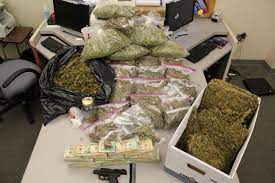
The anti-drug law enforcement agencies are suspecting a steep surge in cross-border trafficking of heroin and crystal methamphetamine with the rapid Taliban takeover in Afghanistan.
- Drugs have been a major source of revenue for the Taliban. With the collapse of Afghanistan’s economy, the Taliban will rely heavily on drug money to maintain control over their cadres.
- Afghanistan reported a 37% increase in the extent of land used for illicit cultivation of opium poppy during 2020 compared with the previous year.
- The country accounted for 85% of the global opium production last year.
- Despite the improved capabilities of the Afghan specialised units over the years, drug seizures and arrests had minimal impact on the opium-poppy cultivation.
- Afghanistan is also turning out to be a major source for methamphetamine.
World Drug Report 2021:
- Around 275 million people used drugs globally in the last year. Over 36 million people suffered from drug use disorders.
- Rise in the use of cannabis during the pandemic has been reported by most countries.
- Non-medical use of pharmaceutical drugs has also been observed in the same period.
- The latest global estimates say, about 5.5 per cent of the population between 15 and 64 years have used drugs at least once in the past year.
- Over 11 million people globally are estimated to inject drugs – half of them have Hepatitis C.
- Opioids continue to account for the largest burden of disease-linked to drug abuse.
Tribunal Law Reforms

The Tribunal Reforms Act, 2021 was passed in both houses recently. The law has triggered a fresh stand-off between the legislature and the judiciary over the powers of and limitations on law making.
- As per the Bill, the minimum age criterion is 50 years for appointment of advocates as members of tribunals and the tenure is four-years.
- The court found the caps arbitrary. But, the government has argued that the move will bring in a specialised talent pool of advocates to pick from.
- Section 3(1), Sections 3(7), 5 and 7(1) ultra-vires Articles 14, 21 and 50 of the Constitution.
- Section 3 (1) bars appointments to tribunals of persons below 50 years of age. This undermines the length/security of tenure and violates both judicial independence and the principle of separation of powers.
- Section 3(7) of the impugned Act which mandates the recommendation of a panel of two names by the search-cum selection committee to the Central Government, violates the principles of separation of powers and judicial independence.
Highlights of Tribunals Reforms (Rationalisation and Conditions of Service) Act, 2021:
- The Bill seeks to provide for uniform terms and conditions of the various members of the Tribunal and abolish certain tribunals, as a part of its bid to rationalize the tribunals.
- It seeks to dissolve certain existing appellate bodies and transfer their functions to other existing judicial bodies.
- It seeks to empower the Central Government to make rules for qualifications, appointment, term of office, salaries and allowances, resignation, removal and other terms and conditions of service of Members of Tribunals.
- It provides that the Chairperson and Members of the Tribunals will be appointed by the Central Government on the recommendation of a Search-cum-Selection Committee.
- It also provides the composition of the Committee, to be headed by the Chief Justice of India or a Judge of Supreme Court nominated by him.
- For state tribunals, there will be a separate search committee.
- The Union government has to ‘preferably’ decide on the recommendations of the search-cum selection committee within 3 months of the date of the recommendation.
- Tenure: Chairperson of a Tribunal shall hold office for a term of 4 years or till he attains the age of 70 years, whichever is earlier. Other Members of a Tribunal shall hold office for a term of 4 years or till he attains the age of 67 years, whichever is earlier.
UP’s Two-Child Policy:

After reviewing over 8,000 suggestions from the public, the Uttar Pradesh State Law Commission has submitted a report and draft Bill of a new population control law (The Uttar Pradesh Population (Control, Stabilisation and Welfare) Bill, 2021) proposing two-child policy to the State government.
- Special facilities to all families (irrespective of the BPL category) who have only one child and undertake voluntary sterilisation.
- A person who has more than two children after the law comes into force would be debarred from several benefits such as welfare schemes.
- On World Population Day (11th July), the Uttar Pradesh government announced a new population policy for 2021-2030.
- The new policy has provisions to give incentives to those who help in population control.
The new policy aims at:
- Decreasing the total fertility rate from 2.7 to 2.1 by 2026 and 1.7 by 2030.
- Increase modern contraceptive prevalence rate from 31.7% to 45% by 2026 and 52% by 2030.
- Increase male methods of contraception use from 10.8% to 15.1% by 2026 and 16.4% by 2030.
- Decrease maternal mortality rate from 197 to 150 to 98, and infant mortality rate from 43 to 32 to 22, and under 5 infant mortality rate from 47 to 35 to 25.
- To increase the accessibility of contraceptive measures issued under the Family Planning Programme and provide a proper system for safe abortion.
- To reduce the newborns’ and maternal mortality rate.
- To provide for care of the elderly, and better management of education, health, and nutrition of adolescents between 11 to 19 years.
- The provision of this legislation shall apply to a married couple where the boy is not less than 21 years of age and the girl is not less than 18.
- The policy will be voluntary – it will not be enforced upon anyone.
Defence Testing Infrastructure Scheme (DTIS):
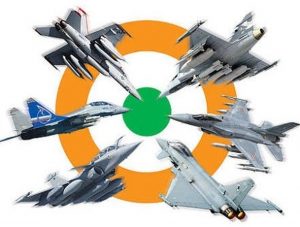
In order to boost domestic defence and aerospace manufacturing, Ministry of Defence (MoD) has launched Defence Testing Infrastructure Scheme (DTIS) with an outlay of Rs 400 crore for creating state-of-the-art testing infrastructure in partnership with the private industry.
- The scheme was launched by Raksha Mantri Shri Rajnath Singh on May 08, 2020.
- The scheme would run for the duration of five years and envisages setting up of 6-8 Greenfield Defence Testing Infrastructure facilities that are required for defence and aerospace related production.
- The projects under the scheme will be provided with up to 75 per cent Government funding in the form of ‘Grant-in-Aid’.
- The remaining 25 per cent of the project cost will have to be borne by the Special Purpose Vehicle (SPV) constituents of which will be the Indian private entities and state governments.
- In this regard, Department of Defence Production/Directorate General of Quality Assurance (DDP/DGQA) has published eight Expression of Interest (EOIs) catering to setting up of defence test facilities in selected domains.
Draft Electricity Rules, 2021:
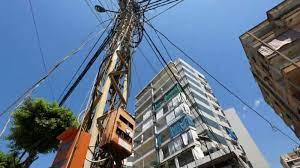
The Ministry of Power has circulated the “Draft Electricity (promoting renewable energy through Green Energy Open Access) Rules, 2021”.
- These rules are proposed for purchase and consumption of green energy including the energy from Waste-to-Energy plants.
- The draft rules have the following subheads within which details are provided: Renewable Purchase Obligation (RPO); Green energy open access; Nodal Agencies; Procedure for grant of green energy open access; banking; and cross subsidy surcharge.
- The Tariff for the Green Energy shall be determined by the Appropriate Commission, which may comprise of the average pooled power purchase cost of the renewable energy, cross-subsidy charges (if any) and service charges covering all prudent cost of the distribution licensee for providing the green energy.”
- The draft rules state “Green hydrogen” is the hydrogen produced using electricity from the renewable sources. The obligated entity including the Industries can also meet their Renewable Purchase Obligation by purchasing green hydrogen.
- The quantum of green hydrogen would be computed by considering the equivalence to the Green hydrogen produced from one MWh of electricity from the renewable sources or its multiple. The norms shall be notified by the Central Commission.
- The Appropriate Commission shall put in place regulations in accordance with this Rule to provide Green Energy Open Access to consumers who are willing to consume the Green energy. All applications for open access of Green Energy shall be granted within a maximum of 15 days.
Earthquakes In Haiti:
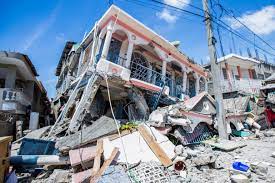
Earthquakes have been wreaking havoc in Haiti since at least the 18th century, when the city of Port-au-Prince was destroyed twice in 19 years. Recent powerful quake killed hundreds and injured thousands more.
- The Earth’s crust is made up of tectonic plates that move. And Haiti sits near the intersection of two of them — the North American plate and the Caribbean plate.
- Earthquakes can occur when those plates move against each other and create friction.
- Multiple fault lines between those plates cut through or near the island of Hispaniola, which Haiti shares with the Dominican Republic. What’s worse, not all of those fault lines behave the same way.
- Haiti is also densely populated.
- Plus, many of its buildings are designed to withstand hurricanes, not earthquakes. Those buildings can survive strong winds but are vulnerable to collapse when the ground shakes.
Tajikistan:
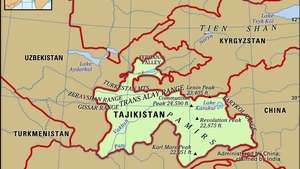
Taliban forces have swept across Afghanistan, finally capturing the capital city of Kabul. As people are desperately trying to leave Afghanistan, many will likely seek refuge in neighbouring Tajikistan.
- First, Tajikistan will have to consider the sentiments of Afghan-Tajiks, some who have been welcomed in the Taliban’s ranks but the majority of whom passionately reject the group.
- Second, Dushanbe will be cognisant of the rise in extremism caused by the dominance of the Taliban, and the impact it will have on radical factions within Tajikistan who aim to establish an Emirate of their own.
- Thirdly, Tajikistan will have to find ways to police its porous border with Afghanistan in order to prevent illicit drugs and refugees from overflowing into the country.
- Tajikistan lies on Afghanistan’s northeastern border, adjacent to the Afghan provinces of Badakhshan, Takhar, Kunduz and Balkh.
- The 1200-km border is also home to the junction between the Hindu Kush and Karakoram Mountains, and is characterised by its rocky, inhospitable terrain.
- For a long time, Tajikistan was considered to be under the influence of the Persians, and many ethnic Tajiks residing in Afghanistan retain similar cultural values.
- Today, Tajikistan, a small landlocked Central Asian nation, has a predominantly Muslim population and is largely considered to be undemocratic, volatile, and economically unstable.
- Until 1991, Tajikistan was a part of the Soviet Union.
- When Moscow invaded Afghanistan in 1979, Tajikistan, along with the other Soviet Socialist Republics in Central Asia, supported the takeover.
- Tajikistan’s support for the Soviets made them a target of the Afghan Mujahadeen who launched attacks against the country in 1987. Due to the close cultural and kinship ties between Afghanistan and Tajikistan, many Tajiks secretly joined the Afghan jihad, fighting alongside the Mujahadeen
Flag Code of India:
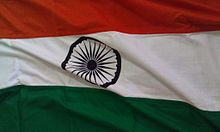
On July 22, 1947, the National flag of India was adopted in its present form (horizontal rectangular tricolour) during a meeting of the Constituent Assembly, 23 days before India’s Independence, and became the official national flag of the Dominion of India on August 15, 1947.
- Present flag is based on the Swaraj flag, a flag of the Indian National Congress designed by Pingali Venkayya.
- After undergoing several changes, the Tricolour was adopted as our national flag at a Congress Committee meeting in Karachi in 1931.
- Art 51A(a) – To abide by the Constitution and respect its ideals and institutions, the National Flag and the National Anthem.
Statutes Governing Use of Flag:
- Emblems and Names (Prevention of Improper Use) Act, 1950.
- Prevention of Insults to National Honor Act, 1971.
Rules governing the display of the Tricolour:
- The Flag Code of 2002 is divided into three parts:
- 1-a general description of the tricolour
- 2-rules for display of the flag by governments and government bodies.
- 3-rules on display of the flag by public and private bodies and educational institutions.
The National Flag of India shall be made of hand spun and hand woven wool/cotton/silk khadi bunting.
- The National Flag shall be rectangular in shape. The ratio of the length to the height (width) of the Flag shall be 3:2.
- The Flag shall not be flown at half-mast except on occasions on which the Flag is flown at half-mast on public buildings in accordance with the instructions issued by the Government.
- The Flag shall not be used as a drapery in any form whatsoever, including private funerals except in State funerals or armed forces or other paramilitary forces funerals”.
- The Flag shall not be used as a portion of costume or uniform of any description nor shall it be embroidered or printed upon cushions, handkerchiefs, napkins or any dress material.
- The “Ashoka Chakra” is the wheel of the law of dharma. Chakra intend to show that there is LIFE IN MOVEMENT and death in stagnation.
- The saffron color denotes renunciation of disinterestedness.
- The white in the center is light, the path of truth to guide our conduct.
- The green shows our relation to the soil, our relation to the plant life here, on which all other life depends.




